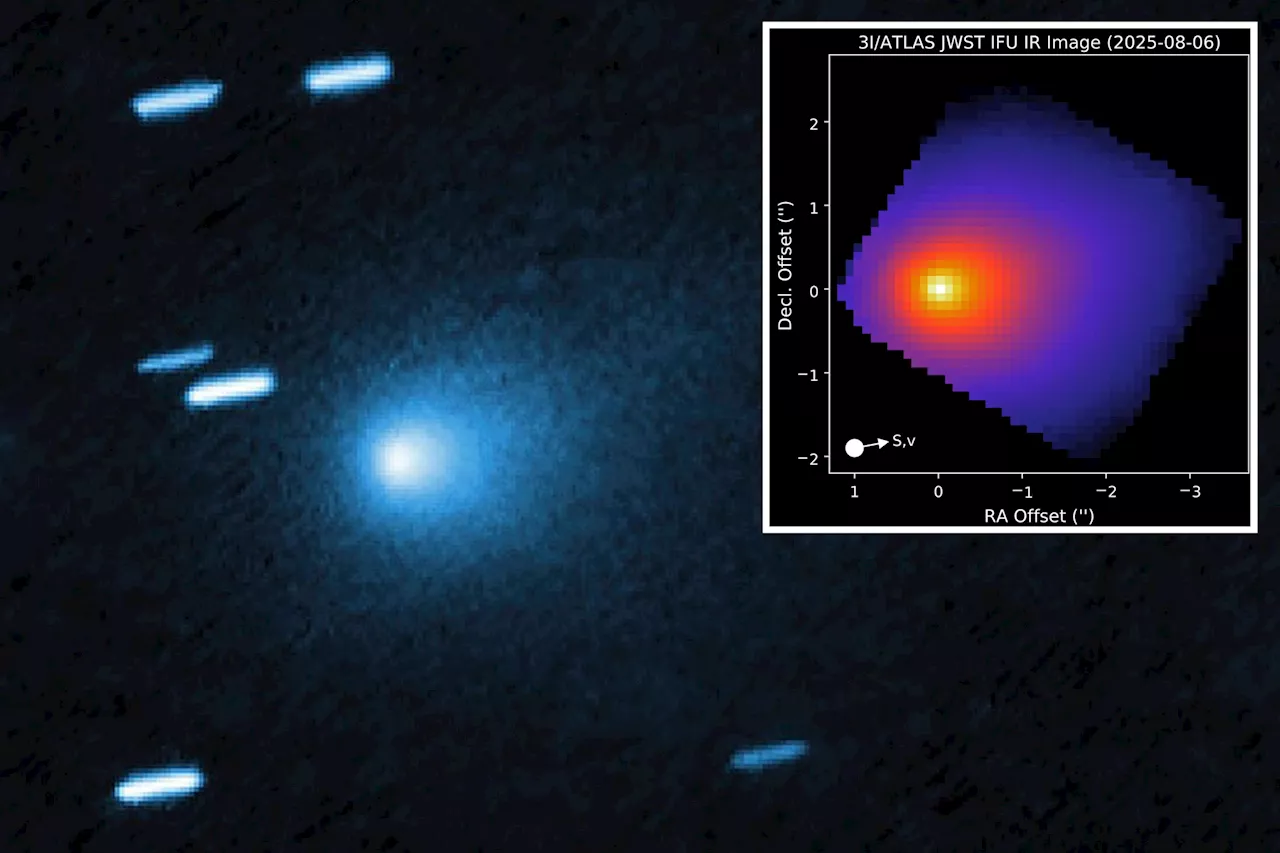Science
Harvard Scientist Discovers Unique Metal Alloy from 3I/ATLAS

A recent discovery regarding the interstellar object known as 3I/ATLAS has captured the attention of astronomers and the public alike. According to Dr. Avi Loeb, a theoretical physicist at Harvard University, this object is emitting a metal alloy that has never been observed in nature. The findings were based on new images captured by the Keck II Telescope in Hawaii, which revealed that 3I/ATLAS is producing approximately four grams of nickel per second, devoid of iron—an unprecedented occurrence for a comet.
The alloy identified in the emissions is known as nickel tetracarbonyl, a compound typically found only in industrial contexts. Dr. Loeb noted, “There is only one place where that is known to exist and that is in industrially produced nickel alloys.” He further emphasized the significance of this observation, stating, “This was never observed for any other object.”
Unusual Characteristics of 3I/ATLAS
Another striking aspect of 3I/ATLAS is its lack of a traditional cometary tail. Dr. Loeb pointed out that comets usually exhibit beautiful tails extending away from the Sun, yet this object shows no evidence of such a feature. Instead, observations from the Hubble Space Telescope revealed a stream of materials, weighing approximately 330 pounds per second, directed towards the Sun. Dr. Loeb remarked, “Why are we seeing a jet pointed at the Sun? A stream of material in the direction of the Sun?”
The composition of this stream is primarily carbon dioxide and water, along with trace amounts of cyanide and nickel. The discovery of these materials suggests that 3I/ATLAS may challenge existing theories regarding cometary behavior and composition.
Awaited Data from Mars Reconnaissance Orbiter
As excitement builds within the scientific community and among skywatchers, there is anticipation for more images from the Mars Reconnaissance Orbiter’s HiRISE camera, which captured data between October 4 and October 7, 2025. Unfortunately, the release of these images has been delayed due to a government shutdown that has impacted NASA’s communications department. Dr. Loeb expressed frustration over the situation, stating, “Who cares about the communication departments? We want to see the data from the scientists.”
The upcoming images from the HiRISE camera are expected to provide critical insights during 3I/ATLAS’s fleeting journey through our inner Solar System. As the scientific community eagerly awaits this data, the discoveries surrounding 3I/ATLAS are already prompting a reevaluation of our understanding of interstellar objects and their materials.
This remarkable finding not only enhances our knowledge of 3I/ATLAS but also opens new avenues for research into the origins and evolution of materials in space, potentially shedding light on the building blocks of life beyond our solar system.
-

 Science2 months ago
Science2 months agoInventor Achieves Breakthrough with 2 Billion FPS Laser Video
-

 Health2 months ago
Health2 months agoCommunity Unites for 7th Annual Into the Light Walk for Mental Health
-

 Top Stories2 months ago
Top Stories2 months agoCharlie Sheen’s New Romance: ‘Glowing’ with Younger Partner
-

 Entertainment2 months ago
Entertainment2 months agoDua Lipa Aces GCSE Spanish, Sparks Super Bowl Buzz with Fans
-

 Health2 months ago
Health2 months agoCurium Group, PeptiDream, and PDRadiopharma Launch Key Cancer Trial
-

 Top Stories2 months ago
Top Stories2 months agoFormer Mozilla CMO Launches AI-Driven Cannabis Cocktail Brand Fast
-

 Entertainment2 months ago
Entertainment2 months agoMother Fights to Reunite with Children After Kidnapping in New Drama
-

 World2 months ago
World2 months agoIsrael Reopens Rafah Crossing After Hostage Remains Returned
-

 Business2 months ago
Business2 months agoTyler Technologies Set to Reveal Q3 Earnings on October 22
-

 World2 months ago
World2 months agoR&B Icon D’Angelo Dies at 51, Leaving Lasting Legacy
-

 Health2 months ago
Health2 months agoNorth Carolina’s Biotech Boom: Billions in New Investments
-

 Health2 months ago
Health2 months agoYouTube Launches New Mental Health Tools for Teen Users









